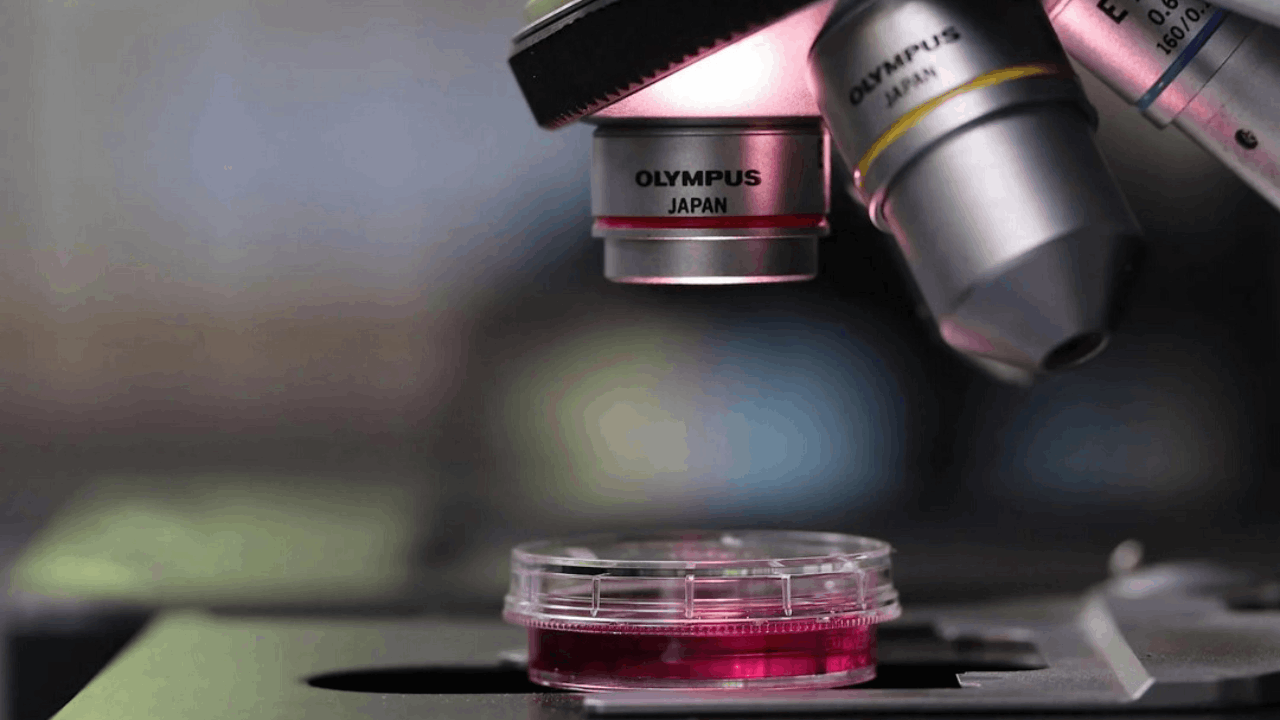预约演示
更新于:2025-05-07
AGA-111
更新于:2025-05-07
概要
基本信息
权益机构- |
最高研发阶段临床3期 |
首次获批日期- |
最高研发阶段(中国)临床3期 |
特殊审评- |
登录后查看时间轴
关联
4
项与 AGA-111 相关的临床试验NCT06115512
A Phase 3, Randomized, Double-Blind, Placebo-Controlled Study to Evaluate the Efficacy and Safety of a Single Lntervertebral Local Administration of AGA111 in Patients With Degenerative Disc Disease Undergoing Lumbar Lnterbody Fusion
The primary objective of the study is to assess the overall efficacy of a single intervertebral local administration of AGA111 in patients with degenerative disc disease undergoing lumbar interbody fusion.
开始日期2023-12-08 |
申办/合作机构 |
CTR20233338
一项评估AGA111在退行性椎间盘疾病患者接受椎体间融合术时单次椎体间局部给药的疗效和安全性的随机、双盲、安慰剂对照的III期研究
主要目的:评估AGA111在退行性椎间盘疾病患者接受椎体间融合术时单次椎体间局部给药的总体疗效。
开始日期2023-11-20 |
申办/合作机构 |
NCT05574543
A Randomized, Double-blinded, Placebo-controlled, Phase I/II Study to Evaluate the Safety and Preliminary Efficacy of Single Administration of AGA111 for Lumbar Interbody Fusion in Patients With Degenerative Disc Disease
The objectives of the study are to evaluate the safety and preliminary efficacy of a single administration of AGA111 for lumbar interbody fusion in patients with degenerative disc disease.
开始日期2020-12-01 |
申办/合作机构 |
100 项与 AGA-111 相关的临床结果
登录后查看更多信息
100 项与 AGA-111 相关的转化医学
登录后查看更多信息
100 项与 AGA-111 相关的专利(医药)
登录后查看更多信息
1
项与 AGA-111 相关的文献(医药)2001-01-01·The American Journal of Human Genetics1区 · 生物学
Fabry Disease: Preclinical Studies Demonstrate the Effectiveness of α-Galactosidase A Replacement in Enzyme-Deficient Mice
1区 · 生物学
Article
作者: Yiannis A. Ioannou ; Ronald E. Gordon ; Robert J. Desnick ; Ken M. Zeidner
12
项与 AGA-111 相关的新闻(医药)2025-03-20
March 18, 2025 -- Angitia Biopharmaceuticals, a global, clinical-stage biotechnology company focused on the discovery and development of innovative therapeutics for serious musculoskeletal diseases, today announced the presentation of data from its randomized, double-blind, placebo-controlled Phase 1/2 study evaluating AGA111 for use in spinal fusion procedures on March 12, 2025, at the 2025 American Academy of Orthopedic Surgeons (AAOS) Annual Meeting in San Diego, California.
In the study, treatment with AGA111, a recombinant human bone morphogenetic protein 6 (rhBMP6), led to faster radiographic fusion and a higher fusion success rate, as well as greater improvements in functional outcomes as assessed by the Oswestry Disability Index (ODI) and pain visual analog scale (VAS), compared to placebo.
“We are honored and excited to present the full dataset from our Phase 1/2 study of AGA111, representing a rare and valuable randomized, placebo-controlled study in the field of orthopedics and spinal fusion,” said Willard Dere, M.D., Chief Medical Officer of Angitia. “Based on these encouraging results, we are now executing a registrational Phase 3 study of AGA111, which we believe has the potential to significantly accelerate bony fusion and meaningfully improve patient outcomes following spinal fusion surgery.”
The Phase 1/2 trial was a randomized, double-blind, placebo-controlled study enrolling 63 patients with degenerative disc disease (DDD) requiring single-level Transforaminal Lumbar Interbody Fusion (TLIF) surgery. Patients were randomized 1:1:1 to 1 of 3 groups: placebo, 0.25mg AGA111, or 0.5mg AGA111. AGA111 or placebo was mixed with autologous blood to create a coagulum, which was then administered into the interbody area during TLIF surgery. No bovine material was used in the treatment or placebo arms. Blinded adjudicators assessed fusion success using CT scan images and hyperflexion/hyperextension X-rays at Months 3, 6, and 12. At the same time, functional outcomes were assessed via the ODI and pain VAS. Study results indicated that AGA111 induced more rapid fusion, increased fusion success rate, and improved functional outcomes compared to placebo.
The abstract outlining the study is entitled, “AGA111, a Recombinant Human Bone Morphogenetic Protein 6 (rhBMP6), Improved Lumbar Interbody Fusion Success Following Single-Level Transforaminal Lumbar Interbody Fusion (TLIF) Surgery in a Phase I/II, Double-Blind, Placebo-Controlled, Randomized Study."
AGA111 is a recombinant human bone morphogenic protein 6 (rhBMP6) product candidate in clinical development to promote bone fusion and functional outcomes in patients undergoing spinal fusion procedures. AGA111 is mixed with autologous blood to create an autologous blood coagulum and administered during the surgery. Angitia is currently studying AGA111 in double-blind, placebo-controlled, randomized Phase 3 study.
Spinal fusion is a widely used surgical treatment for spinal disorders, including degenerative disc disease (DDD). Each year, approximately 146,000 patients in China and over 300,000 patients in the US undergo spinal fusion procedures to treat DDD. The rate of spinal fusion following surgery has a significant impact on patient outcomes. Although lumbar spinal fusion is a commonly performed spinal procedure, it can result in significant morbidity, including nonunion or pseudarthrosis. Patients with nonunion following spinal fusion surgery are at risk for pain, decreased functional outcomes, and re-operation.
Angitia Biopharmaceuticals is a clinical-stage biotechnology company focused on the discovery and development of innovative therapeutics for serious musculoskeletal diseases. Angitia is currently studying 3 biologic product candidates in clinical studies for the treatment of osteoporosis, osteogenesis imperfecta (OI), and spinal fusion. Leveraging the team's extensive experience and scientific acumen in novel drug development, Angitia is committed to providing groundbreaking therapies to satisfy key unmet medical needs.
The content above comes from the network. if any infringement, please contact us to modify.

临床结果
2025-01-12
数据显示,2024年12月国内医疗健康领域共发生109起私募股权融资事件,环比增加9%;已披露的融资总额约46.48亿元,环比增加99.30%。参与融资的投资方包括高瓴创投、启明创投、贝恩资本、夏尔巴投资、达晨财智、金沙江联合资本、普华资本、华睿投资、华山资本、中金资本等投资机构,圣湘生物、君实生物、正和祥、联环药业等相关投资方,以及深创投、广州产投、广州金控、顺禧基金、北京国管、昌发展集团、合肥产投、合肥创投等金。
从109起融资事件的单笔融资金额来看,安济盛生物上个月完成的C轮融资金额居头位,高达1.2亿美元。
2024年12月11日,安济盛生物宣布完成由Bain Capital Life Sciences领投的1.2亿美元C轮融资。参与本轮投资的包括新投资人JanusHenderson及老股东奥博资本、三正健康投资、涌铧投资、君联资本和骊宸投资。
据悉,本次C轮融资所得款项将用于支持安济盛的创新药物管线,致力于开发针对骨骼、关节和肌肉重症疾病领域的差异化创新治疗方案。
资料显示,安济盛生物是一家专注于骨骼、关节和肌肉重症疾病领域的创新药物研发公司,目前有3款生物大分子候选药物正处于临床研究阶段。其中,安济盛生物正在推进AGA2118和AGA2115用于治疗骨质疏松症和成骨不全症(OI)的全球临床开发。同时,公司正在开发促进椎间盘退行性疾病患者脊柱融合的生物制剂AGA111。
其后是即通医疗,其完成由通和毓承及其美元基金120 Capital、一家大型家族办公室、合肥产投、合肥高投、科大硅谷等共同参与的总金额达8000万美元的B轮融资。所融资金将用于支持公司多个合作及自研的外周介入领域创新管线的临床及推广。
资料显示,即通医疗是一家外周血管创新医疗器械研发商,旨在创建一个高水平的医疗器械平台,为患者提供创新的血管治疗方案。
值得一提的是,不久前,即通医疗刚宣布与纳斯达克上市公司Inari Medical达成战略合作,获得Inari旗下包含ClotTriever和FlowTriever在内的一系列创新医疗器械产品在大中华地区的经销权,以及使用Inari的技术进行本土化生产并在大中华地区销售的权利。
此外,宜明生物的Pre-D轮融资金额也比较高,达到近2亿元。本轮融资由北京昌平产业发展投资基金和北京市医药健康产业投资基金共同投资。所融资金将用于进一步支持公司ATMPs CDMO的商业化生产基地建设。
据悉,宜明生物是一家致力于ATMPs技术的开发和应用、为创新药企业提供一站式CDMO整体解决方案的研发生产型生物技术公司。随着本轮Pre-D融资的顺利完成,宜明生物将开启新的征程,加速北京商业化生产基地的建设、持续推进全球化战略和技术创新。在ATMPs产业不断增长,商业化加速兑现的时代,公司表示将以技术优势为核心,凭借完善的全球CDMO服务网络和基础设施更好地助力全球ATMPs企业。
来源:制药网
商务合作
130 6172 3098
zakk.cui@siqibest.com
点击 阅读原文 了解更多
临床研究申请上市
2025-01-06
·抗体圈
2024年12月,全球范围内有近50家药企完成新一轮融资,总金额将近193亿元人民币。
2024年医药领域投融资趋势图
图片来源:药智数据企业版——投资格局数据库
表1 2024年12月全球领域投融资事件
资料来源:药智数据企业版——投资格局数据库
注:表中涉及到的汇率以融资完成时的汇率换算
其中,多家国内企业于12月完成了亿元级融资。
南开和成完成2亿元股权融资,持续扩大在功能高分子树脂领域竞争优势
12月31日,全球固相合成载体树脂关键供应商南开和成完成2亿元B轮融资,本轮融资由深创投集团领投。BMD资本担任本轮融资的独家财务顾问。
本轮融资主要用于南开和成后续产能建设以及公司人才团队的扩展和完善。本轮融资后,南开和成将继续以高效、稳定和高质量的规模化生产为基础,以持续壮大的研发和销售为扩展,未来将进一步巩固和拓展国内国际市场,致力于成为全球功能高分子树脂领域综合型领军企业。
橙帆医药完成近5000万美元Pre-A轮融资,加速推动差异化创新治疗方案开发
12月31日,橙帆医药宣布完成近5000万美元Pre-A轮融资,本轮融资由Panacea Venture(瑞伏医疗)和上海生物医药基金领投,现有股东弘晖基金(HLC)继续支持,Everjoy Fortune,万物创投、德联资本以及联想之星等多家知名投资机构共同参与。
本次融资将用于推进橙帆医药的创新药物管线,加速核心研发项目进入临床开发阶段,专注于开发针对肿瘤和自身免疫疾病等领域的差异化创新治疗方案。
瑞风生物完成数亿元融资,推进基因编辑创新药物研发
12月30日,瑞风生物宣布成功获得数亿元人民币的新一轮融资,本轮融资由广州产投领投,广州金控、科金控股及现有股东港粤资本等机构跟投。
本次融资资金将主要用于推动瑞风生物基因编辑药物临床试验、后续研发管线扩展以及核心技术创新。
浩博医药完成7300万美元B轮融资,加速乙肝治愈疗法AHB-137的全球开发
12月27日,小核酸领域创新药研发公司浩博医药宣布完成7300万美元B轮融资,本轮融资由汉康资本领投,夏尔巴投资 、鼎晖VGC和某全球知名产业投资机构跟投。同时,上轮投资机构启明创投、InnoPinnacle Fund和元生创投追加投资。
本轮融资将主要用于推进核心小核酸创新药物AHB-137的中国和国际临床试验, 以及早期商业化的准备工作。此外,资金还将支持公司新研发管线的拓展及团队的持续发展和建设。
华奥泰完成2亿元融资,投后估值32亿元
12月25日,12月25日,华海药业发布公告,子公司华奥泰生物完成2亿元融资,由海璟创投独家投资。
从回购条款可以看到华奥泰生物未来3-5年的经营目标,包括3年内完成一款产品获批上市,一款产品开展关键三期临床,一款产品进入2/3期临床,5年内完成两款产品获批上市,两款产品进入临床2/3期临床,以及约定时间实现IPO等。
宜明生物完成新一轮近2亿元战略融资,支持ATMPs CDMO的商业化生产
12月24日,宜明生物宣布成功完成新一轮近2亿元人民币战略融资。本次融资由北京昌平产业发展投资基金和北京市医药健康产业投资基金共同投资,是继2023年4月C+轮融资后宜明生物获得的又一轮融资。
本轮融资将用于进一步支持宜明生物的ATMPs CDMO的商业化生产基地建设,促进技术迭代,提升 CDMO全球服务网络的服务能力,夯实公司在ATMPs药物技术赛道上的核心竞争力,打造从临床前研究、产品开发到商业化生产的CDMO服务大平台。
创响生物拟反向合并Ikena以开发靶向OX40创新药,融资7500万美元
12月23日,纳斯达克生物医药公司Ikena Oncology(IKNA.US)和创响生物(Inmagene)宣布双方已达成最终合并协议。创响生物将反向收购Ikena。此次合并将产生1.75亿美元资金,其中包括7500万美元超额认购的PIPE私募融资。Ikena已与Deep Track Capital、Foresite Capital、RTW Investments等新投资人达成认购协议,此外,Ikena原有股东BVF Partners LP、Blue Owl Healthcare Opportunities、Omega Funds和OrbiMed等也参与了此次PIPE认购。
合并后的公司将专注于开发针对OX40的单克隆抗体(mAb)IMG-007,用于治疗特应性皮炎。合并后的公司计划以“ImageneBio”的名称运营,并在纳斯达克以“IMA”为股票代码进行交易。
安济盛生物完成1.2亿美元C轮融资,专注骨骼等重症疾病研发
12月11日,安济盛生物宣布完成1.2亿美元C轮融资,本轮融资由贝恩资本领投,新进投资机构有Janus Henderson,老股东奥博资本、三正健康投资、永华资本、涌铧投资、君联资本、骊宸投资。
本次融资所得款项将用于支持安济盛的AGA2118(硬骨抑素和DKK1的双特异性抗体)、AGA2115、AGA111(注射用重组人骨形态发生蛋白6(BMP-6))和其他在研管线的新药研发 ,致力于开发针对骨骼、关节和肌肉重症疾病领域的差异化创新治疗方案。
法伯新天完成A2轮亿元融资,强化分子影像与放射性药物研发
12月9日,法伯新天宣布完成A2轮亿元融资。本轮融资由中核产业基金管理有限公司管理的北京同辐创新产业投资基金合伙企业(有限合伙)领投。
本轮融资资金将主要用于法伯新天现有管线的研发及放射性药物产业化基地建设。
齐禾生科完成超2亿元A轮融资,加快基因编辑技术研发与产业化
12月2日,齐禾生科宣布完成超2亿元人民币A轮融资。本次融资由北京市医药健康产业投资基金领投,昌发展集团、铭哲资产参与跟投,老股东辰德资本持续加持。
所筹资金将主要用于公司基因编辑技术的深度研发、基因编辑产品管线的优化与拓展、及商业化平台落地,进一步提升公司在生物技术产业领域的核心竞争力与市场影响力。
亚飞生物完成B2轮超4亿元融资,加速推进新药开发
12月2日,亲合力母公司亚飞生物宣布,公司已完成B2轮融资,本轮投资额超过4亿元人民币。本轮融资由国投招商领投,华创资本、宏诚投资、国证投资、国生资本、鸿富资产、安信国生微芯基金、国元创新投、弘曜科创等知名投资机构共同参与。中信证券参与担任本次财务顾问。
本轮融资将为亲合力在全球创新药物的临床研究进程中提供强劲动力,加速公司技术平台和药物的研究开发,以满足肿瘤治疗领域迫切的临床需求。
识别微信二维码,添加抗体圈小编,符合条件者即可加入抗体圈微信群!
请注明:姓名+研究方向!
本公众号所有转载文章系出于传递更多信息之目的,且明确注明来源和作者,不希望被转载的媒体或个人可与我们联系(cbplib@163.com),我们将立即进行删除处理。所有文章仅代表作者观点,不代表本站立场。
核酸药物基因疗法
100 项与 AGA-111 相关的药物交易
登录后查看更多信息
研发状态
10 条进展最快的记录, 后查看更多信息
登录
| 适应症 | 最高研发状态 | 国家/地区 | 公司 | 日期 |
|---|---|---|---|---|
| 椎间盘疾病 | 临床3期 | 中国 | 2023-11-20 | |
| 脊柱融合 | 临床3期 | 中国 | - |
登录后查看更多信息
临床结果
临床结果
转化医学
使用我们的转化医学数据加速您的研究。
登录
或

药物交易
使用我们的药物交易数据加速您的研究。
登录
或

核心专利
使用我们的核心专利数据促进您的研究。
登录
或

临床分析
紧跟全球注册中心的最新临床试验。
登录
或

批准
利用最新的监管批准信息加速您的研究。
登录
或

生物类似药
生物类似药在不同国家/地区的竞争态势。请注意临床1/2期并入临床2期,临床2/3期并入临床3期
登录
或

特殊审评
只需点击几下即可了解关键药物信息。
登录
或

生物医药百科问答
全新生物医药AI Agent 覆盖科研全链路,让突破性发现快人一步
立即开始免费试用!
智慧芽新药情报库是智慧芽专为生命科学人士构建的基于AI的创新药情报平台,助您全方位提升您的研发与决策效率。
立即开始数据试用!
智慧芽新药库数据也通过智慧芽数据服务平台,以API或者数据包形式对外开放,助您更加充分利用智慧芽新药情报信息。
生物序列数据库
生物药研发创新
免费使用
化学结构数据库
小分子化药研发创新
免费使用

